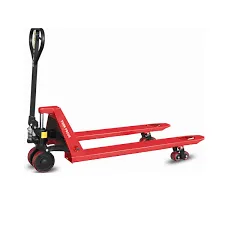


Understanding Crane Dynamometers An Essential Tool for Load Measurement
Crane dynamometers are specialized instruments designed for measuring the weight of loads being lifted by cranes in various industrial applications. These essential devices play a pivotal role in ensuring safety, efficiency, and accuracy in lifting operations. In this article, we will explore the functionality, types, applications, and best practices associated with crane dynamometers.
What is a Crane Dynamometer?
A crane dynamometer is essentially a load cell or force gauge that is integrated into a crane system. By measuring the force exerted during lifting operations, it provides an accurate reading of the weight of the load being handled. This data is crucial for operators, as exceeding the rated capacity of a crane can lead to dangerous situations, including equipment failure and accidents.
How Do Crane Dynamometers Work?
Crane dynamometers operate on the principle of load cells, which utilize strain gauge technology. As the load is applied to the dynamometer, a strain gauge deforms, causing a change in electrical resistance. This change is proportional to the force applied, allowing for accurate weight measurement. The readings are typically displayed on a digital readout, making it easy for operators to monitor load weights in real-time.
Types of Crane Dynamometers
Crane dynamometers come in various types, each tailored to specific needs and situations
1. Mechanical Dynamometers These rely on traditional mechanical components, such as springs and levers, to measure weight. While they are simple and cost-effective, they may lack the precision and features of advanced electronic models.
2. Electronic Dynamometers These are more advanced and widely used due to their accuracy and ease of use. Electronic dynamometers typically feature digital displays, data logging capabilities, and can interface with other systems for enhanced functionality.
3. Wireless Dynamometers An innovation in load measurement, wireless dynamometers transmit data to a remote display, eliminating the need for cables. This feature enhances mobility and safety while providing operators with real-time data.
4. Portable Dynamometers Designed for versatility, portable dynamometers can be easily transported between locations. This flexibility is especially beneficial in construction sites or environments where multiple lifting operations occur.
Applications of Crane Dynamometers

Crane dynamometers are utilized across a wide range of industries, including construction, maritime, manufacturing, and logistics. Their versatility allows for application in various scenarios
- Construction Sites Ensuring that loads are within safe operating limits is critical for crane operators. Dynamometers facilitate the precise measurement of materials being lifted, thus preventing overloading and potential accidents.
- Shipping and Maritime Operations In the shipping industry, crane dynamometers are vital for loading and unloading cargo. Accurate weight measurements ensure that vessels remain balanced and that safety regulations are adhered to.
- Manufacturing In manufacturing plants, these devices are used to lift heavy machinery and components. Dynamometers help determine the weight of components to ensure that cranes are used within their limits.
- Logistics and Warehousing In logistics, crane dynamometers assist in managing inventory by providing weight data that helps in organizing and storing goods efficiently.
Best Practices for Using Crane Dynamometers
To maximize the effectiveness and longevity of crane dynamometers, operators should adhere to several best practices
1. Regular Calibration Ensure that the dynamometer is regularly calibrated to maintain accuracy. Following the manufacturer's recommendations for calibration frequency is essential.
2. Proper Maintenance Regular inspection and maintenance are critical for the longevity of the device. Check for any signs of wear or damage and address any issues promptly.
3. Training Operators Proper training for crane operators on the use of dynamometers can significantly enhance safety and efficiency. Understanding how to read measurements and interpret data accurately is essential.
4. Adhering to Load Limits Always adhere to the manufacturer's load limits for both the crane and the dynamometer. This practice helps prevent overload situations.
Conclusion
Crane dynamometers are indispensable tools that enhance safety and efficiency in lifting operations across various industries. By understanding their functionality, types, and best practices, operators can ensure safe and effective use, ultimately helping to prevent accidents and promote a safer working environment. As technology advances, the integration of smart features in dynamometers will likely continue, further improving the way weight measurements are handled in the field.



